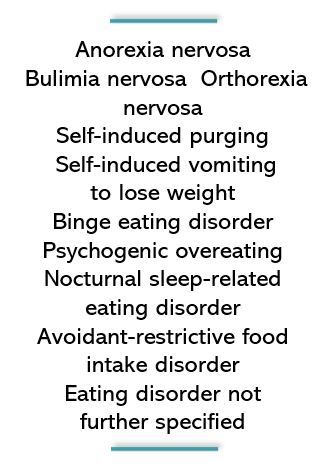Eating Disorder Hospitalizations Rising among US Adolescents, New Study Warns
Eating disorders among US youth spiked during the COVID-19 pandemic, but a new study shows hospitalizations have been inching up for a decade or more.
©terovesalainen/stock.adobe.com

The number of adolescents hospitalized for eating disorders in the US has increased steadily, including a significant increase observed during the COVID-19 pandemic, according to findings published in Hospital Pediatrics.
Study investigators reported a more than 7-fold increase in hospitalizations between 2010 and 2021 and a 70% increase from 2019, just before the start of the pandemic, to 2021. Anorexia nervosa was the most common diagnosis, comprising more than half of all hospitalizations and represented the largest ED group during every year of the current study.
Megan Vo, MD, medical director of the Eating Disorders Outpatient Clinic at Stanford Medicine Children’s Health, in Palo Alto, CA, wrote that while outpatient treatment is appropriate for most individuals with an eating disorder, a substantial proportion require hospitalization for medical stabilization. They cite recent research showing the surge in US pediatric patients presenting to emergency departments with mental or behavioral health issues during the pandemic and observe that the findings include data that suggest the number of adolescents seeking care for eating disorders is part of that trend.

Their interest was to better understand the pattern by looking at trends in a large sample of adolescents hospitalized for eating disorders and over a longer period of time than the pandemic years.
Vo and colleagues studied data from the PedsNET network of children’s hospitals across the country, including persons aged 12 to 21 years hospitalized at any time from 2010 to 2022 with a primary diagnosis of 1 or more of the conditions at right. The research team used discharge diagnosis data to collect information on type of ED, body mass index (BMI) percentage, presence of cardiac manifestations, and presence of coexisting psychiatric diagnoses such as depression, anxiety, suicidal thoughts, and posttraumatic stress disorder.
FINDINGS
Investigators analyzed data on 13 403 hospitalizations for 8652 patients. Mean age of the final cohort was 15.8 years, and the majority were described as women (85.9%) and as White (71.8%). The median BMI percentage was 90.3%, which is just slightly above the category of mild malnutrition (BMI 80% to 90%), they wrote.
A greater than sevenfold increase in hospitalizations was seen from 2010 (294) to 2021 (2135), the latter being the highest yearly total. After the more than 70% increase from 2019 to 2021, hospitalizations decreased slightly to 1783 cases in 2022, according to the results.
Researchers observed the median hospital stay was 11 days with the majority of patients discharged to their homes. Nearly one-quarter of the cohort (23.6%) however, required rehospitalization for eating disorder treatment within 1 year.
Anorexia most common, suicide ideation high
Anorexia nervosa was the most common of the eating disorders, representing 57.5% of cases, according to the study. Approximately half of the cohort did not have malnutrition while the balance were classified as mildly (25%), moderately (18.6%) or severely (5.4%) malnourished.
Vo and colleagues reported a high rate of psychiatric diagnoses among those hospitalized for eating disorders, including depression (58.5%), anxiety (57%), and posttraumatic stress disorder (10.0%). Suicidal thoughts were observed in 1 in 5 (21.9%) inpatients. These data did not come as a surprise, Vo et al wrote. They cited a body of research demonstrating a strong association between anxiety and depression and the severity of eating disorder symptoms and worse prognosis. In fact, anorexia nervosa is the disorder most highly associated with mortality, and has been linked with premature death from suicide, the authors wrote.
Don't trust the scale
The investigators also stressed that previous research has found a stronger correlation between severity and speed of weight loss and medical instability than between absolute weight on hospital admission and the need for inpatient treatment. They emphasized that the study cohort’s overall mBMI percentage was just nominally above the limit for mild malnutrition, yet the participants had been judged in poor enough health to be admitted—a finding that underscores “the importance of recognizing the impact of [eating disorders] regardless of a patient’s weight status.”
The study cohort’s overall mBMI percentage was just nominally above the limit for mild malnutrition, yet the participants had been judged in poor enough health to be admitted.
Among the study’s limitations Vo et al point to the findings as trends and not discovery of causation. They note also that while their data reflect a large hospital network, many admissions for eating disorders are made in community or general hospitals, limiting the ability to generalize these findings. Also, given the geographic and local trends in prevalence of COVID-19 infection during the pandemic, the final analysis does not “formally include the pandemic’s impact.”
Hospitalization for eating disorders among adolescents has seen a gradual but steady increase since 2010 with a "dramatic" spike during the COVID-19 pandemic, the authors wrote, however, "the severity of malnutrition in these patients has remained stable," "Most adolescents hospitalized for EDs continue to be white females, though males and patients of color must be recognized," they concluded.
Source: Rappaport DI, O’Connor M, Reedy C, Vo M. Clinical characteristics of US adolescents hospitalized for eating disorder 2010-2022. Hosp Pediatr. 2024;14(1):52-58. doi:10.1542/hpeds.2023-007381
Newsletter
Enhance your clinical practice with the Patient Care newsletter, offering the latest evidence-based guidelines, diagnostic insights, and treatment strategies for primary care physicians.